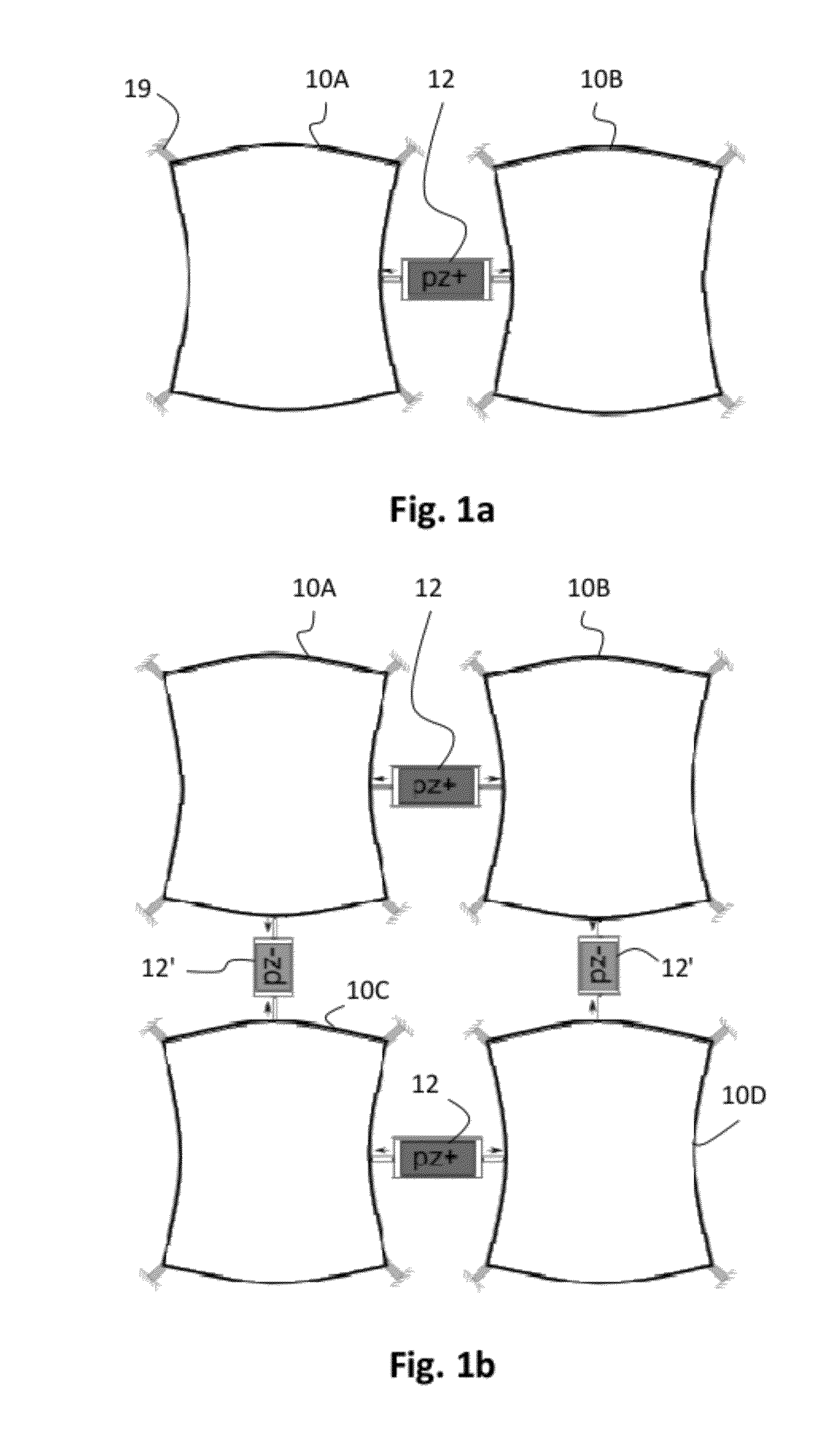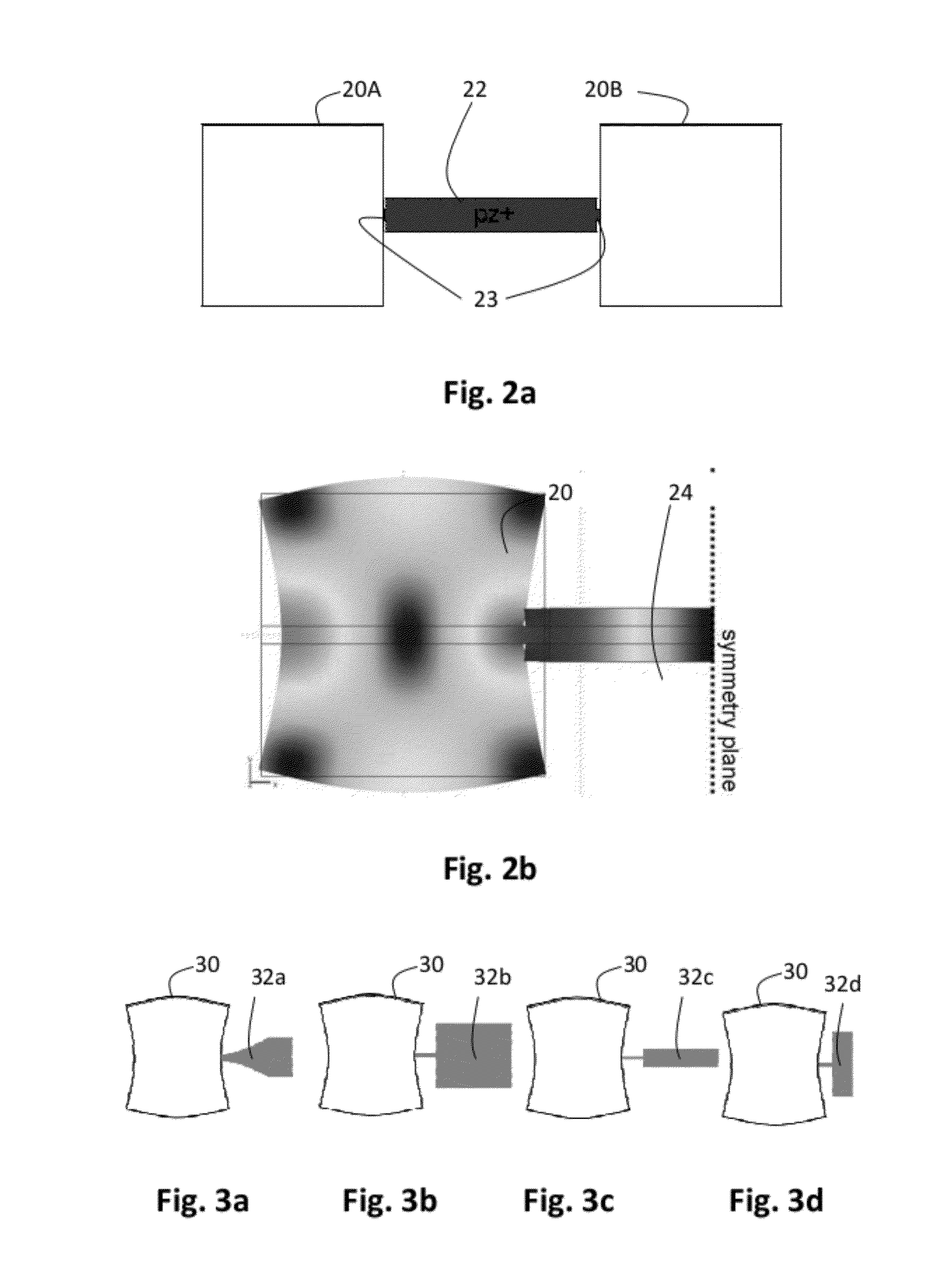Micromechanical resonator array and method for manufacturing thereof
a micromechanical and array technology, applied in the field of micromechanical resonators, can solve the problems of different production process for crystal resonators from the process of producing most other electrical circuits, quartz crystal components also tend to be large in size, and the actuation of silicon based resonators is affected by the production process
- Summary
- Abstract
- Description
- Claims
- Application Information
AI Technical Summary
Benefits of technology
Problems solved by technology
Method used
Image
Examples
Embodiment Construction
[0054]The invention is now described in more detail having particular focus on Lamé mode resonators and shortly introducing other preferred modes too. However, first the concept of c44 dependency of silicon and particular advantages of the invention with respect to temperature compensation are described in more detail.
[0055]The resonance frequency of a mode of a resonator having an arbitrary shape is, in a general form, given by
f=A1Lcρ,(Eq.A)
where c is a generalized elastic modulus of the material, ρ is the material density, and L is a generalized dimension of the resonator. For single crystal silicon, the elastic properties are given by three independent elastic parameters c11, c12 and c44, and the generalized elastic modulus c is a function of the three elastic parameters
c=c(c11,c12,c44). (Eq. B)
[0056]Importantly, constant A depends on the resonator geometry, on the resonator relative orientation with the silicon crystal axes, and on the particular re...
PUM
 Login to View More
Login to View More Abstract
Description
Claims
Application Information
 Login to View More
Login to View More - R&D
- Intellectual Property
- Life Sciences
- Materials
- Tech Scout
- Unparalleled Data Quality
- Higher Quality Content
- 60% Fewer Hallucinations
Browse by: Latest US Patents, China's latest patents, Technical Efficacy Thesaurus, Application Domain, Technology Topic, Popular Technical Reports.
© 2025 PatSnap. All rights reserved.Legal|Privacy policy|Modern Slavery Act Transparency Statement|Sitemap|About US| Contact US: help@patsnap.com



